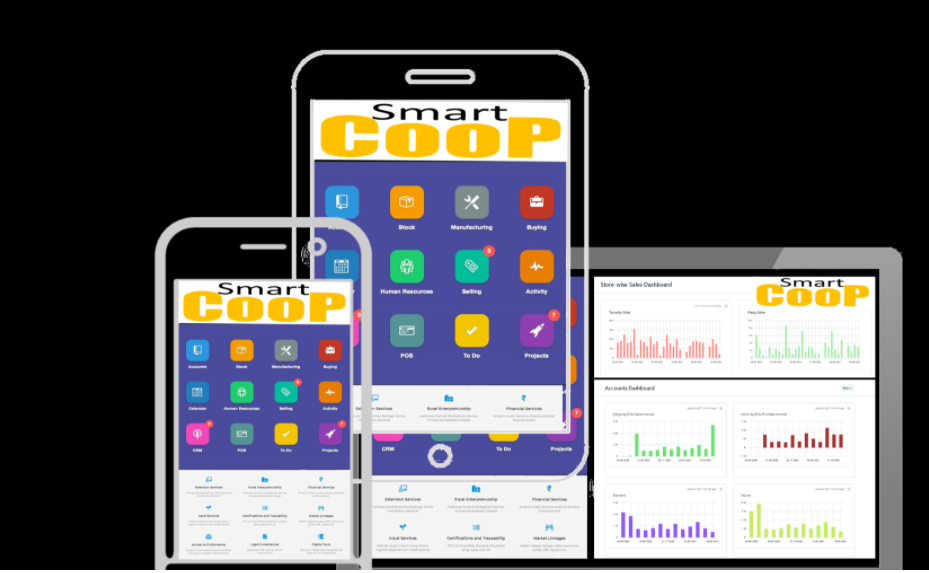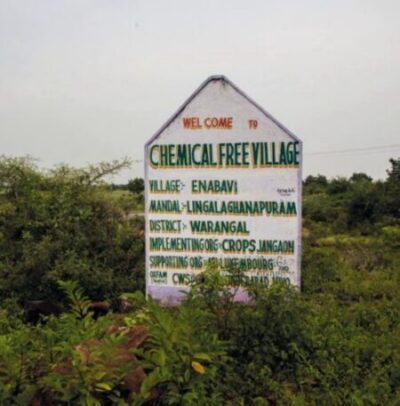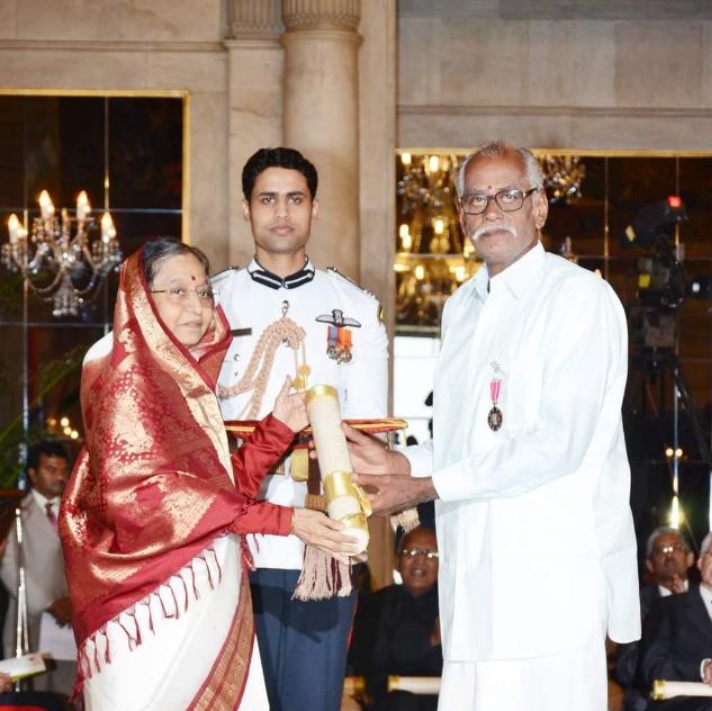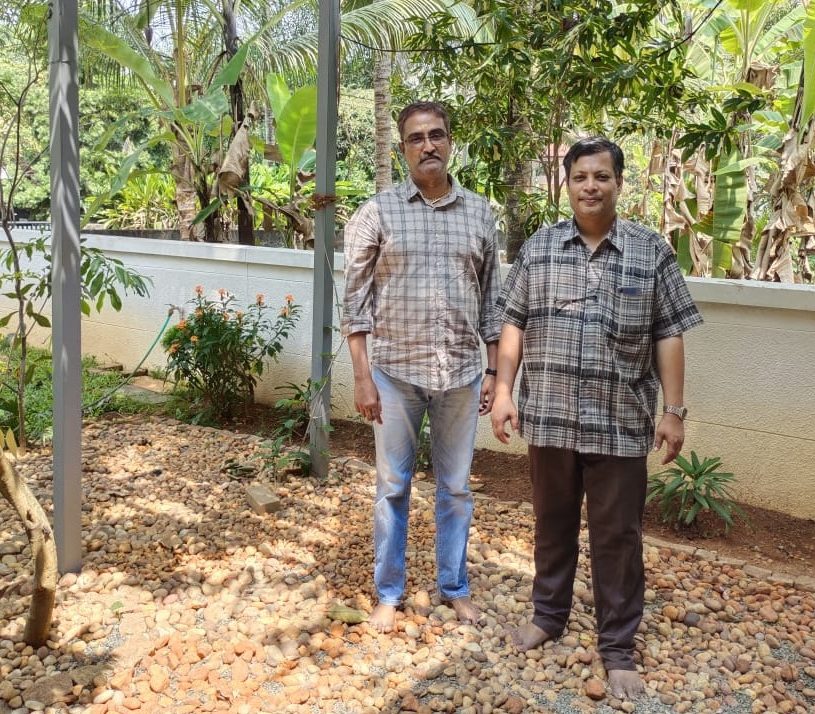Highlights:
- Best Farmer Producer Organizations enabler award for FPO hub in 2021
- Smart coop ERP system for automation of records for producer companies
- “The methane emission and CO2 emissions from paddy fields is nearly 10 tons per acre. We calculated for 1 crore acre. The total emission from paddy fields is equal to nearly 21 million cars running for 1 year. 21 million cars mean 1/10 of total cars in India”
- “when farmers sell individually they are not taxed, but when they sell as cooperatives they are taxed”
- “Today the reason the area under paddy is increasing is because the government is buying paddy. And farmers are using fertilizers because they are also subsidized”
“At one point of time the cost of fertilizers was an issue. Now it is the cost of labor. Problems are dynamic in nature, which will change from time to time. Moreover, problems vary from geography to geography as well as size of farming land. Even though there were thousands of NGOs working for the farmers, a scientific approach was missing. Until then focus was on technology. In order to be involved with the government we need a scientific approach rather than an emotional or desi (indigenous) or traditional or any single approach. The year 2004, Andhra Pradesh witnessed more than 4000 farmers suicide and it was disturbing for me so thought of an independent research institution and named it as a Center for Sustainable Agriculture (CSA). We focused on what can be done to reduce risk in agriculture. Today we are supporting 240 Farmer Producer Organizations in Andhra Pradesh and Telangana, which account for ¼ of total Farmer Producer Organizations in both states and we have presence in 9 states” told Dr. G.V. Ramanjaneyulu who is founder and director at CSA.
FPO hub is an initiative of Center for Sustainable Agriculture and they won best FPO enabler award by Samunnati and The Economic Times. So, we interacted with the founder of CSA regarding the role of FPOs to address contemporary agrarian challenges.
What are the key features that helped FPO hub to consider for Best Farmer Producer Organizations enabler award?
“The 12 years of journey in organic business is a complete uphill task. We could successfully run it. It is a great success. We are neither in big profit nor loss. However, we could give good prices to the farmers. The business model was to make investors (farmers) money, instead profit for the company. This business model was impossible to understand for many. Then there are certification issues and many other issues. One by one we could resolve it. I can certainly say that ‘sahaja’ is one good example in the entire country to understand how to solve end to end issues. There are companies that are having more turnover than us; however they can’t pay the price we are able to pay to farmers as well as sell at the price we can sell”.
We have developed a lot of IT tools for Farmer Producer Organizations for entire management and decision making. We developed several mobile applications and online platforms which were unique in making functioning of Farmer Producer Organizations simpler.
“For instance, if a farmer producer has a turnover of 1 crore, to manage its operation like account management, manufacturing, inventory management it needs 4 to 5 people. Thus to do that we developed a smart coop where staff can enter the daily record and close record by evening. So, whenever there are compliances such as payment of GST or report to ROC they can be done by a click of a button. It is an automated integrated ERP system. We are doing it for Farmer Producer Organizations on a pilot basis who have 5000 plus members. We are hoping to provide it to every Farmer Producer Organization soon. Instead of hiring 5 people you can hire 2 people to run the whole thing. We are doing it in all Indian languages. Pest and weather management tools are also available with us”.

What is the idea behind building farmer institutions?
“In the year 2008, we could have cut down the use of pesticides. However, we failed to convince government officers because this was a government program. From the government officers’ point of view it was easier to continue it (cutting down pesticide usage). However governance is dynamic. Officers can be transferred or a new government can form. Thus, if a farmer or farmer groups are not empowered this program won’t be sustained (continued). So we need a sustainable institution, thus we proposed a (farmer) cooperative. In 2008 Farmer Producer Organizations were not in discussion. Government was not keen on it. So we (CSA) moved out of it.
Secondly, we want to make farmers accountable for the institution (Farmer Producer Organizations). Farmers should see the success of Farmer Producer Organizations as their career. Thus sahaja aharam began. Cooperatives are not viable, sustainability issues, political interventions and taxation issues etc. For instance, when farmers sell individually they are not taxed, but when they sell as cooperatives they are taxed. We realized that Farmer Producer Organizations should be managed by people who know business. Farmers can’t make the right decision as well as invest money. So instead of starting a Farmer Producer Organizations we thought of creating an ecosystem that helps Farmer Producer Organizations to sustain.”
How to join an FPO hub?
“We tried to make it simpler. 10 to 15 farmers come as a group or if a group of farmers are interested we help them to form a group. That’s the key. Those willing can join us. We connect them to nearby Farmer Producer Organization to extend support in terms of certification, market access to inputs etc. The group of farmers have to maintain a data and stand guarantee to each other. The idea is the willingness of farmers to make a transition. When the data is submitted by saying that we 15 people are doing organic(farming), and if any quality issue is identified then the entire 15 people will be liable for it. So it is the responsibility of the 14 people to make sure there are no such problems.”
Collective actions for climate justice! What do you think about it?
“One of the ideas we are trying out is, agriculture contributes to climate change and at the same time agriculture is worst affected by climate change. There is no real data that explains how we can cut down the contribution of climate change by agriculture and build resilience for farmers’ livelihood. We are trying to quantify these two things and we are able to build a tool for it.
We recently published parts of the data in The Times of India (TOI) daily. The Telangana government decided to promote paddy and cotton. The area under paddy cultivation has increased by 208% in the last seven years. Methane emission and CO2 emissions from paddy fields is nearly 10 tons per acre. We calculated for 1 crore acre. The total emission from paddy fields is equal to nearly 21 million cars running for 1 year. 21 million cars mean 1/10 of total cars in India. And which is equal to 1613 million plants absorbing co2 for 10 years. So you (Government) continue cultivating paddy and saying “haritha haram”, one crore of free saplings is nothing. We didn’t calculate the emissions from the dam and the emissions from the power to lift from the dam. We are trying to quantify that and display it in the packet we are producing. So we are displaying the ecological footprint. And cooperatives are having an ecological footprint. At the state level and national level, we are trying out to understand the performance of the state. We are doing it in Punjab, Andhra Pradesh and Telangana. I believe this helps consumers to understand the right perspective of climate justice while choosing the food aspect.
For instance, if more consumers demand rice, more farmers grow paddy. This entire fight (between states) for water and it is for paddy cultivation. However moving away from water intensive crops has no incentives. But growing them has a lot of incentives.”
Policies! Do you think we need more policy level support?
“Yes. Certainly. One major hurdle was income tax. Today the problem is credit. Today for a farmers’ cooperative to have access to credit, they ask for collateral of non agriculture assets. All Farmer Producer Organizations’ members have agricultural land but Farmer Producer Organizations don’t have that. Thus, denying access to credit. Members can’t pledge their land to the Farmer Producer Organization. So access to credit should improve.
We need to come up with a new policy instrument and new loan products. Across the country what is available, is a loan designed for SHG groups which is an unsecured loan. However, Farmer Producer Organizations is not an unsecured loan. Farmer Producer Organizations have crops and farmers land and market. So it is not so insecure. Collateral should be redefined. That’s the first step.
Second is across the country the government is the biggest buyer. If the government buys from Farmer Producer Organizations, it will work. The problem is that the tenders are designed in such a way that Farmer Producer Organizations are ineligible. An additional space is required for Farmer Producer Organizations to survive.”
How to look at the government of Telangana’s Rythu Bandhu and other similar schemes?
“Rythu Bandhu is a path-breaking initiative. The blunder is the land ownership criterion. Instead it should have been about cultivation. People who cultivate should have a mechanism to identify them and pay them. We made an analysis of 18 countries. Most of the countries have moved away from product-based subsidies. For example, today the area under paddy is increasing because the government is buying paddy. And farmers are using fertilizers because they are also subsidized. The best model would be to provide an amount to the famers and ask them to choose. That works better.”
How to protect the FPOs from becoming a market for the pesticide industry?
“I would say 95% of Farmer Producer Organizations have become a market (for other industries). They couldn’t be a market rather creating a market. Both are different. Are you becoming a market or are you creating a market? For farmers you have to create a market.
Today most Farmer Producer Organizations have become a market for the pesticide industry thinking they are making a better deal from the manufacturer which is happening in opposite. So, we are making a circular economy, so we make our inputs. For instance, when a farmer can’t make something, another farmer will make it. Nearly 60 to 70 percentage of seeds, bio fertilizers, and small equipment all are made internally. We create a market for ourselves. We buy in bulk and sell it. Internally we are trying to make a market”.
Future plans of FPO hub
“Farmer Producer Organizations hub is planning to be open to the public. The idea is a simple platform for farmers, producers to sell or buy inputs and outputs, connecting e-naam or national markets or pledging can be done. All the available digital platforms are linked and easy to operate.
Second, we are planning to work with several small rural entrepreneurs to create support systems and service centers for the farmers. It is an ecosystem we are trying to build. We are trying to create hubs in every district. Sahaja aharam was started in 2008 as a trader business. We are trying a marketplace model where Farmer Producer Organizations can directly sell. The store will be like a supermarket where each shelf will be owned by each Farmer Producer Organizations. It is a market placement. Envisioning a system where tractability of the farmer is possible and its ecological footprint. Example, you can compare how much energy or water is consumed by comparing each packet. We are introducing the US and UK market as the sahaja brand. “My suggestion is to do what you are good at. Don’t try to do everything. Innovation and creating a management system so one gradually learns it. These are two key points to crack“and he concluded.
Center for Sustainable Agriculture believes in the role of farmers owned institutions while achieving climate action with economic justice.
What is your idea for green recovery?
-Team ER
Featured photo courtesy: https://csa-india.org/




